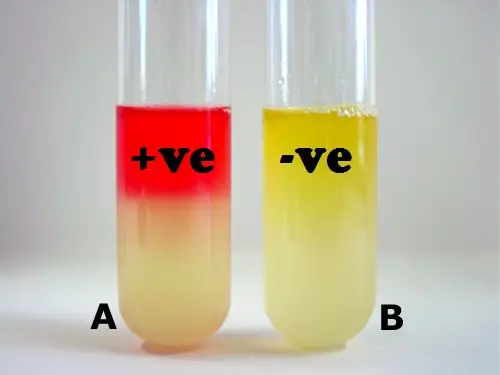Methyl Red (MR) test is a biochemical test performed on bacterial species to detect the ability of an organism to produce stable acids end products (Mixed-acid fermentation) from supplied glucose.
It is used as the part of the IMViC tests, a set of four useful reactions that are commonly designed for the differentiation of enterics (members of family Enterobacteriaceae). The IMViC series includes following four tests:
- Indole test
- Methyl red test
- Voges-Proskauer test
- Citrate test
Principle of Methyl Red Test
Some bacteria have ability to perform mixed acid fermentation of glucose in MR-VP medium. The products of mixed-acid fermentation are a complex mixture of acids, particularly lactate, acetate, succinate and formate as well as ethanol and equal amounts of H2 and CO2. This causes the medium to acquire an acidic pH. Methyl Red is a pH indicator, which remains red in color at a pH of 4.4 or less.
Procedure
- By using sterile inoculating loop, inoculate the unknown microorganism into the fresh, sterile medium.
- Leave the other broth uninoculated (this will be a control).
- Incubate the inoculated tube at 35-37C for two to five days.
- After incubation, obtain the broths from the incubator and add 5 drops of Methyl Red reagent to the broth
- Observe the color.
Interpretation
- Development of red color is taken as Positive.
- Development of yellow color (No color change) after addition of reagent is taken as Negative.
Examples
- MR Positive Organisms : Escherichia, Salmonella, Proteus
- MR Negative Organisms : Enterobacter, Klebsiella

